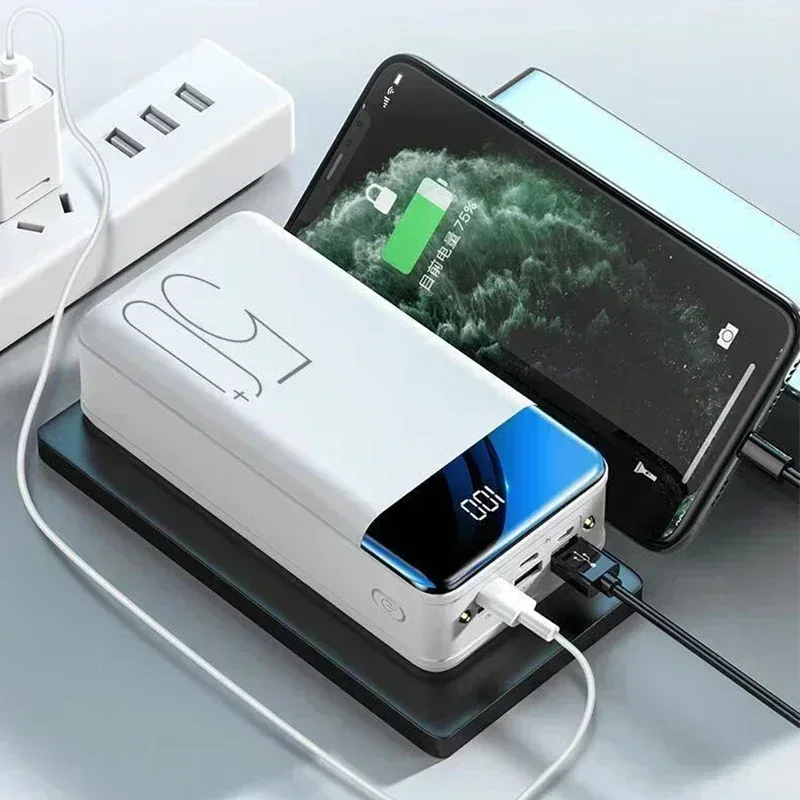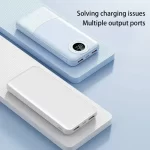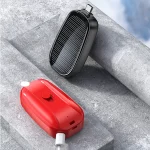Traveling with electronic gadgets has become an indispensable part of modern life. Among the plethora of devices that frequent flyers carry, power banks are considered essential for ensuring their gadgets are charged throughout their journey. However, there are stringent regulations governing the transport of power banks in flight, especially those with higher capacities. “Is a 30000mAh Power Bank Allowed in Flight? What You Need to Know” navigates through the detailed considerations and rules imposed by airlines and aviation authorities, aiding travelers in avoiding any inconveniences.
Understanding mAh and Wh: The Basics
To understand whether a 30000mAh power bank is permissible on flights, one must first comprehend the metrics used to gauge battery capacities. Milliampere-hour (mAh) is a measure of electric charge, commonly used to describe the capacity of a battery. On the other hand, Watt-hour (Wh) is a unit of electrical energy, often required by aviation authorities to classify and regulate battery transport. The conversion between mAh and Wh is straightforward: Wh = (mAh × V) / 1000, with V representing battery voltage. Typically, power banks operate at 3.7V. Thus, a 30000mAh power bank equates to 111Wh, putting it within a specific regulatory bracket.
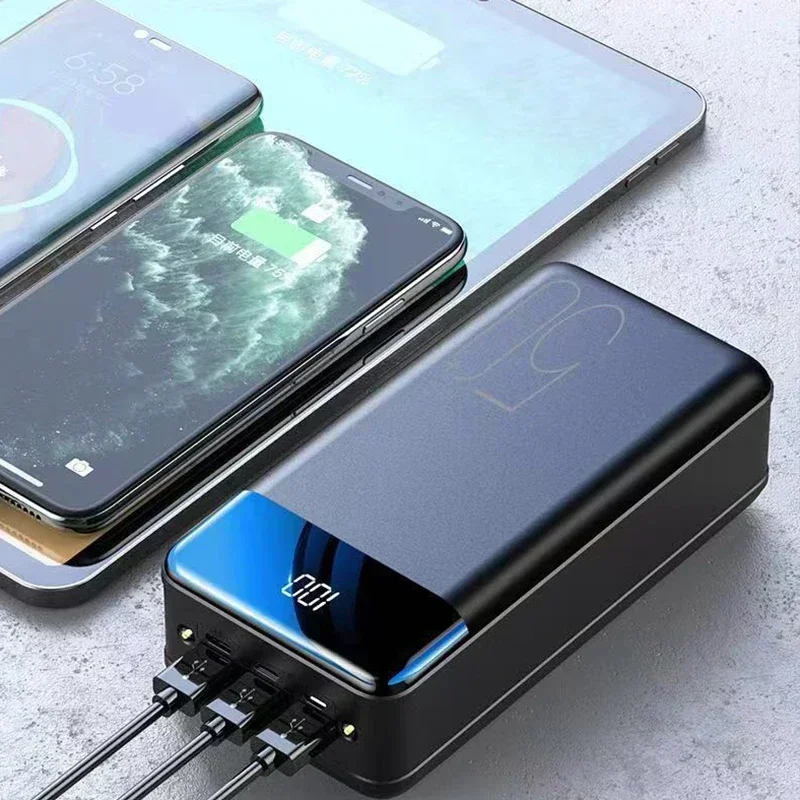
Regulatory Framework Governing Power Banks
The International Air Transport Association (IATA) sets forth guidelines for the safe transport of lithium batteries. According to IATA regulations, power banks are treated as spare lithium-ion batteries and should be carried in carry-on luggage, not checked baggage. Specifically, for batteries between 100Wh and 160Wh, passengers are allowed to carry up to two such batteries, subject to airline approval. Consequently, a 30000mAh (111Wh) power bank fits within this permissible range, thus adhering to the rules given it is carried in hand luggage.
Airline-Specific Policies and Variances
While IATA provides the foundational regulations, individual airlines may impose additional restrictions. Consequently, travelers must research airline-specific policies before traveling. Some carriers might require pre-approval for larger capacity power banks, while others might impose stricter rules on battery transportation. Therefore, it is crucial to disclose and seek approval for higher-capacity power banks during the booking process or prior to the flight.
Packaging and Handling: Precautions and Best Practices
Airlines mandate rigorous handling procedures to mitigate fire risks associated with lithium batteries. Consequently, travelers should ensure their power banks are properly packed. This involves using protective pouches to prevent short-circuiting, avoiding exposure to extreme temperatures, and ensuring that power banks are switched off throughout the flight. Additionally, it is advisable to isolate power banks in carry-on luggage from metallic objects to prevent accidental activation.
Consumer Safety and Airline Obligations
Despite adherence to guidelines, the intrinsic risks posed by lithium batteries are significant. Airlines are thus mandated to have safety protocols for dealing with potential battery malfunctions. Passengers are encouraged to notify the cabin crew if they detect any unusual behavior from their power banks, such as swelling, overheating, or leakage. Airlines often have equipment on board to handle such emergencies effectively.
Scenarios of Policy Non-Compliance
Failure to comply with airline and IATA battery regulations can result in confiscation of the power bank, fines, or even the traveler being denied boarding. In severe cases where non-compliance results in an on-flight incident, the penalties can extend to legal ramifications. Thus, understanding and adhering to regulations is not just advisable but mandatory for ensuring a hassle-free flying experience.
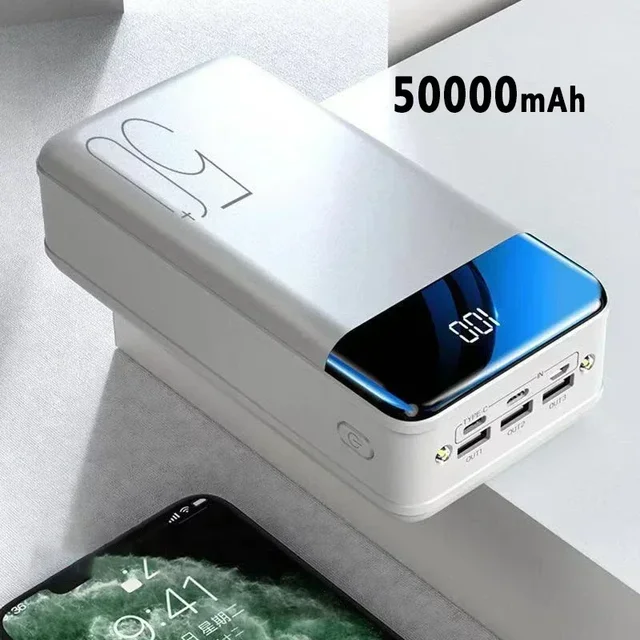
International vs. Domestic Flight Policies
Variations exist between domestic and international flight policies regarding battery transport. For instance, some countries may have stricter import regulations for lithium-ion batteries, impacting a traveler’s ability to carry high-capacity power banks. As a result, travelers need to be aware of both their departure and destination country’s guidelines to prevent confiscation or fines at border controls.
Technological Advances and Future Regulations
With the rapid advancements in battery technology, regulatory bodies constantly update guidelines to align with new safety challenges and innovations. Travelers should stay informed about these evolving standards, as newer, safer battery models could result in relaxed restrictions. Keeping abreast of the latest developments ensures compliance and aids in selecting compliant power banks.
Industry-Wide Impact and Traveler Adaptation
Regulations on power banks are reflective of broader safety considerations in the aviation industry. The goal is to minimize fire hazards and ensure passenger safety. Thus, travelers are encouraged to adapt by opting for multiple lower-capacity power banks or investing in IATA-compliant models. Such strategies allow travelers to stay within allowed limits while meeting their energy needs during flights.
Consulting the Airline Directly for Confirmation
While general guidelines and industry standards provide a foundational understanding, each airline may have specific nuances in their regulations. It is prudent to consult your airline directly before your flight to confirm their rules concerning power banks. This can often be done through the airline’s customer service line or via their official website. Providing your power bank’s specific details—such as brand, capacity, and voltage—allows the airline to give precise information. This step minimizes the risk of carrying a non-compliant power bank and facing potential boarding issues or confiscation.
Alternative Charging Solutions During Flights
Given the restrictions and potential hassles associated with high-capacity power banks, travelers might consider alternative charging solutions. Many airlines now offer in-seat power outlets or USB charging ports, particularly on long-haul international flights. These can be used to charge smaller devices like smartphones, tablets, and laptops directly from the plane’s power supply. While these sources may not be as fast as your personal charger, they provide a reliable way to keep essential electronics operational throughout your journey. Planning to use these resources can reduce reliance on large power banks and simplify travel preparations.
The Role of Airport Security and Customs
Airport security and customs play critical roles in enforcing regulations on lithium-ion batteries and power banks. Security personnel are trained to identify and evaluate electronic devices during baggage scans, ensuring all items meet safety criteria. If a high-capacity power bank is flagged, security may confiscate it, and in some cases, fines can be imposed. Customs officials at international borders may also inspect electronics to ensure compliance with both entry and exit regulations. Therefore, being aware of the security and customs processes at all checkpoints prevents unplanned disruptions and ensures a seamless travel experience.
Environmental and Health Considerations
Beyond compliance and airline regulations, it is essential to consider the environmental and health impacts of using high-capacity lithium-ion batteries like the 30000mAh power bank. Lithium extraction and battery manufacturing contribute to environmental degradation. Moreover, improper disposal of these batteries can lead to toxic waste and pollution. Health risks, although rare, include exposure to battery leaks which can be harmful. Choosing eco-friendly certified power banks and adopting responsible disposal practices align with global sustainability goals and ensure safer usage of electronic devices.
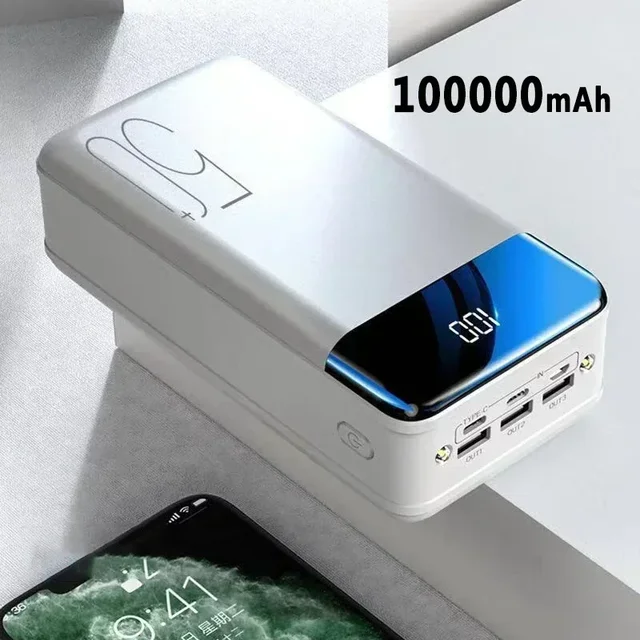
Conclusion: A Comprehensive Guide for Safe Travel
Navigating the complexities surrounding “Is a 30000mAh Power Bank Allowed in Flight? What You Need to Know” provides clarity and ensures a safe, hassle-free travel experience. By understanding the regulations, identifying compliant products, and adhering to best practices in handling and packaging, travelers can enjoy the convenience of carrying their essential power banks without complications. This comprehensive guide underscores the importance of staying informed and diligent in observing airline and IATA guidelines, safeguarding both personal and public safety during flights.
